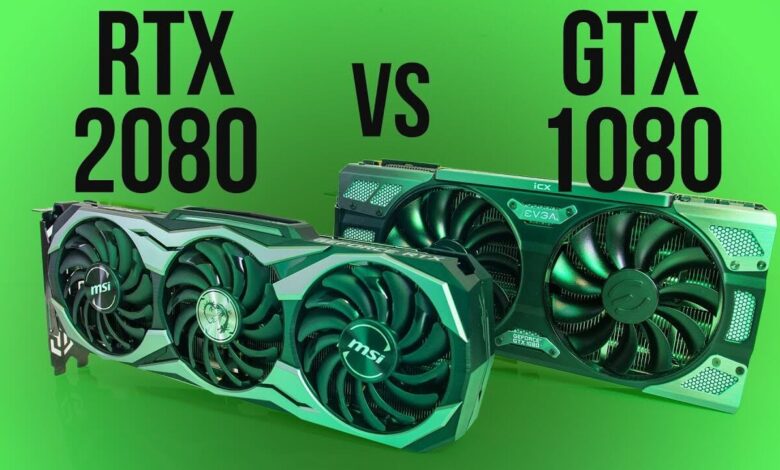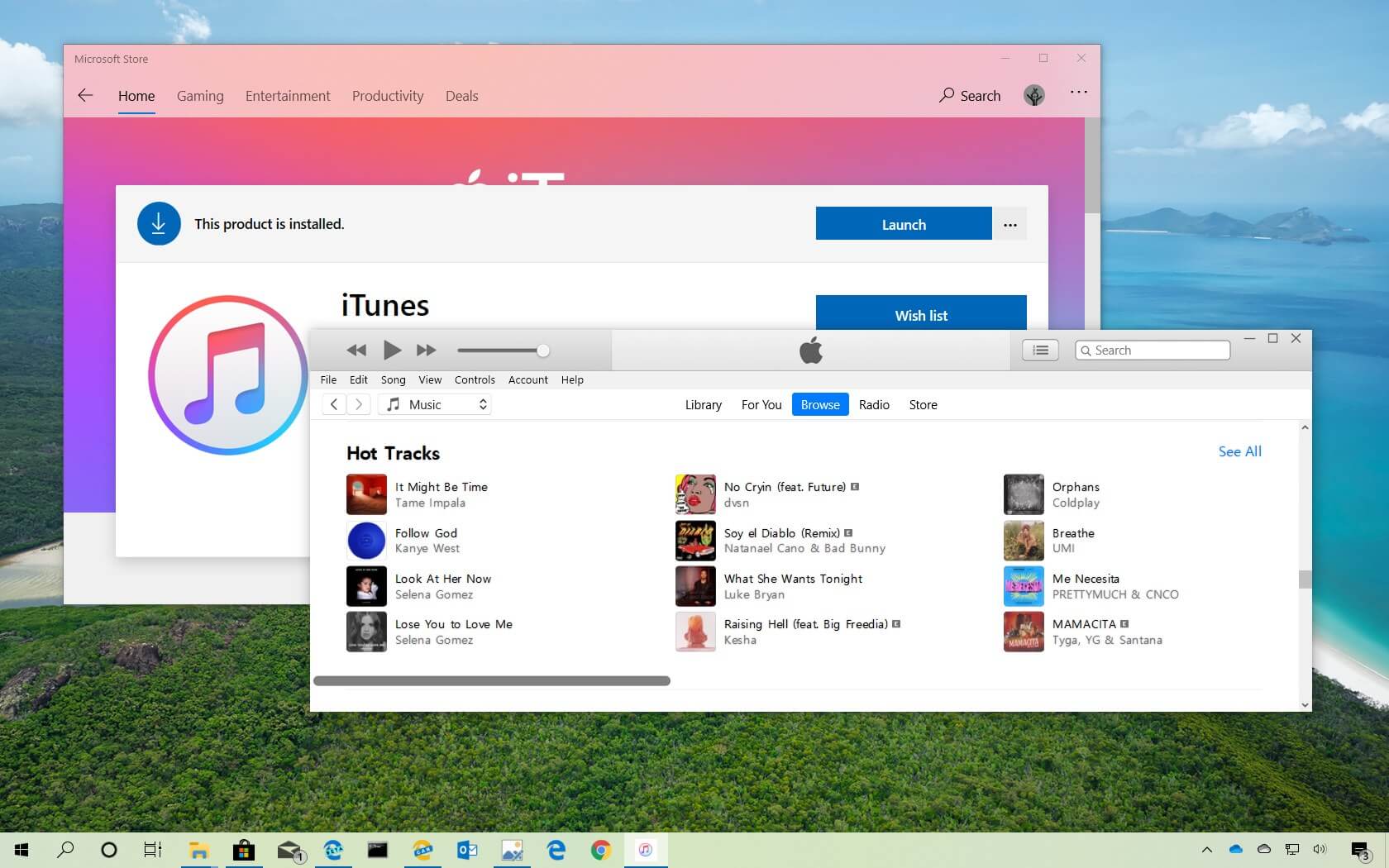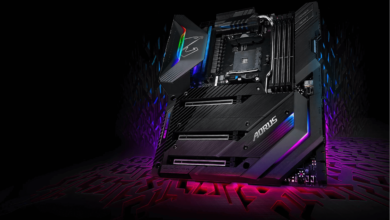RTX 2080 vs GTX 1080 – Which is Best for Gaming?

There was once a time when PC gaming couldn’t compete with consoles. Modern advancements have brought a revolution in the gaming PC industry. It’s so significant that if adequately calibrated, you can surpass even the most high-end consoles. However, high-performance PC gaming relies on the potential of your graphic card.
NVidia’s RTX 2080 caused quite a buzz, and nobody could help but compare it to the prominent GTX 1080. Of course, the older components tend not to stand against the modern upgrades—however, RTX 2080 Vs GTX 1080 isn’t about comparison.
It’s to help you make the right choice. The article will compare the two to help to decide which one would suit your requirements better.
After all, apart from performance differences, there’s a significant cost difference as well.
So, let’s begin the war between RTX 2080 vs GTX 1080!
RTX 2080 Vs GTX 1080
Here’s a quick comparison chart to help you understand the difference without getting in-depth. This could help you learn a thing or two about the two graphic cards.
If you want to expand on the information, keep reading ahead.
Compression between RTX 2080 Vs GTX 1080
|
Specification |
RTX 2080 | GTX 1080 |
| Memory Speed | 14 GBPS | 10 GBPS |
| Video Memory | 8 GB DDR6 | 8 DDR5X |
| Based Clock | 1.5 GHz | 1.6 GHz |
| Boost Clock | 1.8 GHz | 1.73 GHz |
| Stream Processors | 2,944 | 2,560 |
| Tensor Cores | 368 | N/A |
| RT Cores | 46 | N/A |
| Texture Units | 184 | 104 |
| ROP Units | 64 | 64 |
| Power Connection | 1×8 Pin & 1×6 Pin |
1×8 Pin |
The most significant RTX changes are the integration of DDR6 that is capable of delivering almost twice the speed of the memory. However, the significant difference is in the components of these cards.
GTX 1080 offers the new 16nm FinFETT Process that surpassed other performance, transitioning, and efficiency processors. So, you can expect NVidia to one-up itself with the latest addition in the GPU family.
RTX brings you the turning GPU architecture. It enables you to get brilliantly elaborated lighting with around 20-25x better ray tracing. If you bid this turning-based RTX’s nodes against a CPU, it offers a remarkable 30x boost. Additionally, you get Tensor cores and RT cores that bring you access to the AI field of the gaming industry.
RTX 2080 Vs GTX 1080 – Battle Of Performance
Of course, as mentioned above, it would seem that RTX 2080 is the clear winner of the specifications. However, GTX should be given a fair chance to present its case. Therefore, we are bidding them against each other in an actual performance war.
- HD Gaming: Both components support HD gaming. You can efficiently use 1080P to 4K without any significant impact on the performance. Here, both of them support a full-fledged gaming experience.
- Frame Rates: GTX 1080 offers sufficient framerates for you to have a lag-less experience. However, RTX 2080 is undoubtedly smoother with frame rates that range from 1.15x to 1.5x that of GTX 1080. So if you want a seamless gaming experience, RTX stands better.
The Big Guns Of RTX 2080
Apart from the given differences, there are two bigger guns that RTX 2080 brings to the table: Ray tracing and Deep Learning Super Sampling (DLSS).
Both of these features are becoming an indispensable requirement in modern gaming hardware. Even the latest Gaming consoles emphasize the importance of these two factors.
Where Does GTX 1080 Stand?
From a glance at the specifications, it is clear that RTX 2080 surpasses GTX 1080 in almost every aspect. However, it is also more costly. As a next-generation GPU card, you have a fantastic hike in the performance and capabilities. However, it prompts a question of ‘Where does the GTX 1080 stand?’
Well, think of GTX 1080 as the last flag bearer of the previous generation gaming. With the advent of RTX, you are getting intelligent gaming components and a more immersive experience that will become prevalent across all gaming platforms.
Therefore, if you don’t want to get into that jibber-jabber, GTX 1080 holds a firm stance. It has seen some massive price cuts recently. If you want to upgrade your PC into a robust gaming platform, GTX 1080 delivers an impeccable performance without burning a hole in your budget.
What’s Ray Tracing?
Ray tracing is a feature available in most graphic processing units, including GTX 1080. However, none of the GPUs before RTX 2080 firmly focused on this factor. It brings you a boost in 3D performance and refines the lighting of the games.
Thus, you receive better color and realistic lighting for higher graphic performance without taking a toll on the FPS and other factors.
How Does DLSS Work?
Deep Learning Super Sampling allows the GPU to automatically tweak or decrease performance by focusing on the game areas.
Whenever you don’t need to focus on the ‘resolution,’ it will reduce the focus, which wouldn’t profoundly impact, but enough to give you a performance boost. If you have the requirement of higher resolution in a scene, the GPU will boost the performance.
For example: If you’re chasing someone in the game, the surrounding doesn’t need focus so that the resolution will drop for it. However, if you’re in a steady frame or game, the visuals will tweak up.
RTX 2080 Vs GTX 1080: Where To Bring?
If you had considered RTX 2080 during its launch, it wouldn’t have been a suitable investment. The future regarding ray tracing and other tweaks wasn’t assured. There weren’t many games where you could reap the full-fledged reward from RTX 2080’s performance. At that time, GTX 1080 would have been a better choice.
However, times have changed now. RTX 2080 is undoubtedly an invaluable investment that could future-proof your gaming unit for years to come.
Conclusion
RTX 2080 surpasses GTX 1080 in virtually everything. However, GTX1080 is still a very tangible and affordable investment for hardcore gamers or anyone looking to tweak up their GPU performance under budget.
It was once best-in-class that is now replaced by RTX. However, RTX is more costly and the next generation GPU. If you want to have an impeccable gaming experience, then RTX 2080 is the way to go without considering the expenses.
For more amazing articles don’t forget to check out website FlipTheTech now!










